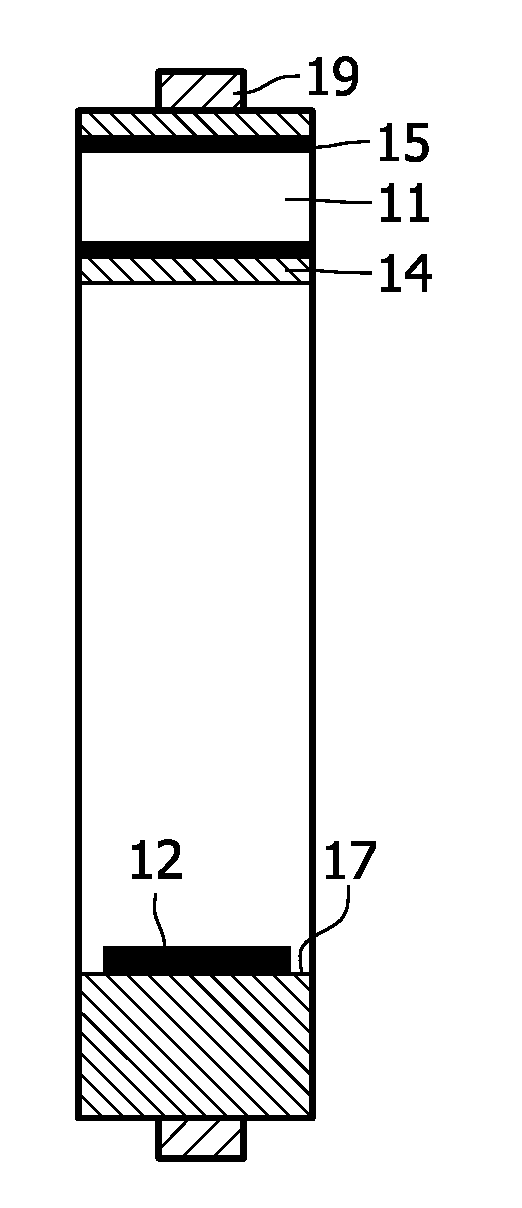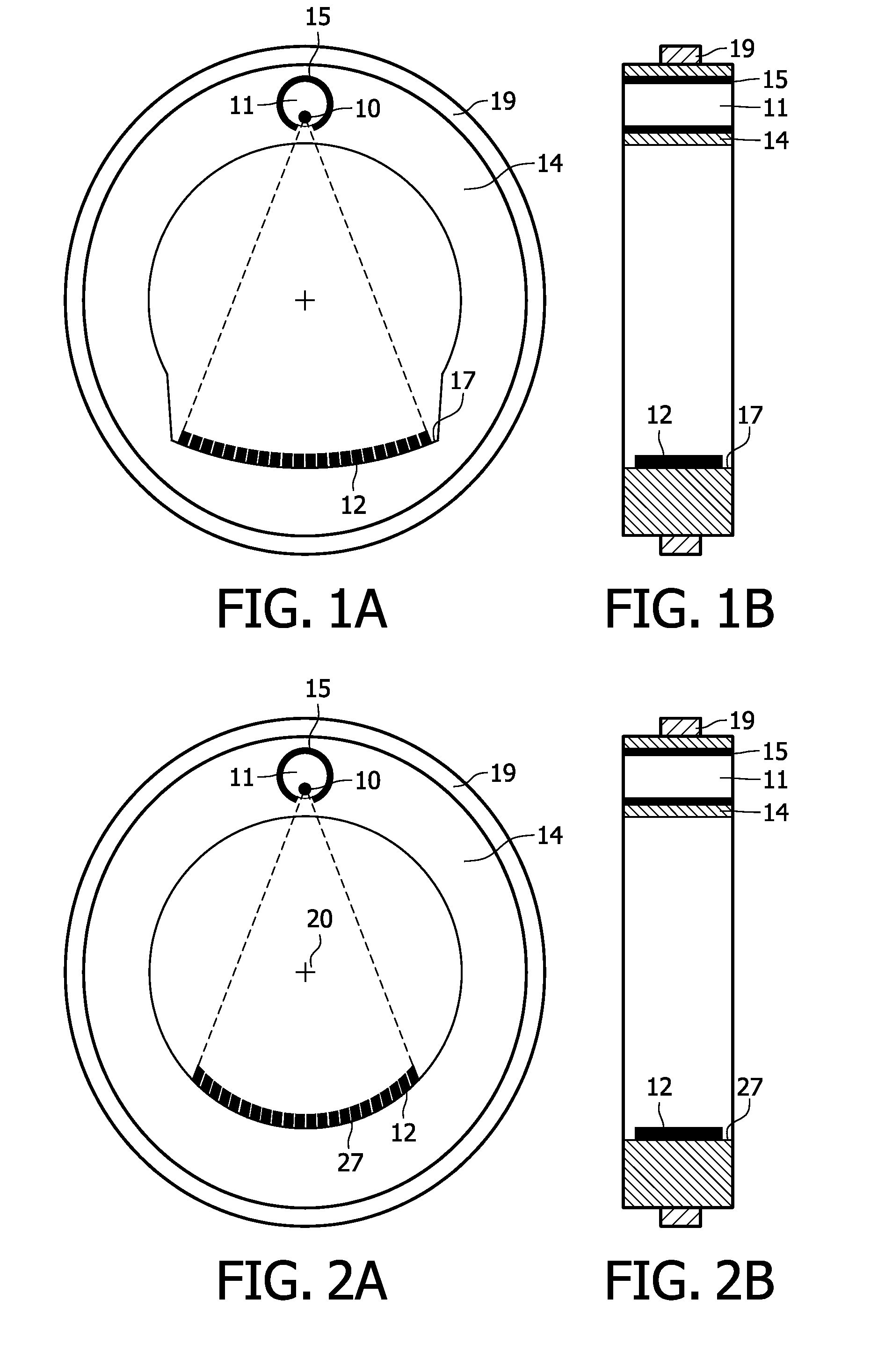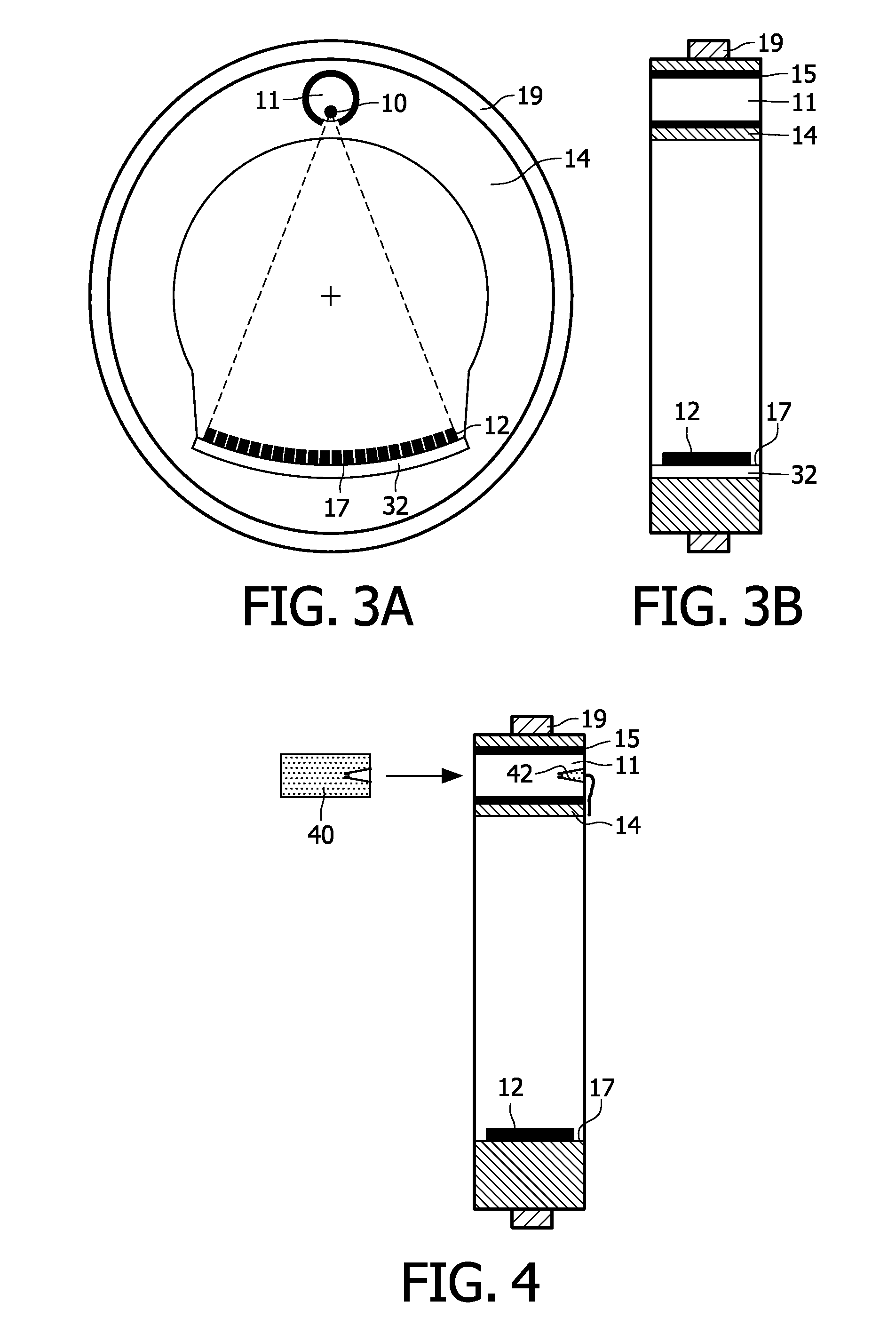Rotor and x-ray ct scanners
a ct scanner and rotor technology, applied in tomography, medical science, diagnostics, etc., can solve the problems of mechanical stacking error, image artifacts, and increased cost, and achieve the effect of reducing mechanical stacking error
- Summary
- Abstract
- Description
- Claims
- Application Information
AI Technical Summary
Benefits of technology
Problems solved by technology
Method used
Image
Examples
Embodiment Construction
[0026]FIGS. 1A and 1B are schematic sectional views illustrating an embodiment of a rotor in accordance with the invention. The rotor comprises:[0027]a radiation source having a focal spot 10 for radiating beam towards a subject;[0028]detection means 12 for generating signals responsive to energy attenuation of said beam;[0029]a circular body 14 having a cavity 11 for housing the radiation source, and a circle arc-shaped surface 17, 27 on which the detection means 12 are mounted;
wherein the circle arc-shaped surface 17, 27 is placed opposite to the cavity 11 with respect to the subject, said cavity 11 comprising an inside surface mounted with a shield 15 for shielding the radiation not towards the subject.
[0030]Optionally, the rotor comprise bearing 19, which connects the circular body 14 to a stator, which may be fixed in a gantry, and thus enables the rotor to rotate around the subject with support of the stator. The bearing 19 can be on the outside of the rotor or inside of the r...
PUM
 Login to View More
Login to View More Abstract
Description
Claims
Application Information
 Login to View More
Login to View More - R&D
- Intellectual Property
- Life Sciences
- Materials
- Tech Scout
- Unparalleled Data Quality
- Higher Quality Content
- 60% Fewer Hallucinations
Browse by: Latest US Patents, China's latest patents, Technical Efficacy Thesaurus, Application Domain, Technology Topic, Popular Technical Reports.
© 2025 PatSnap. All rights reserved.Legal|Privacy policy|Modern Slavery Act Transparency Statement|Sitemap|About US| Contact US: help@patsnap.com



